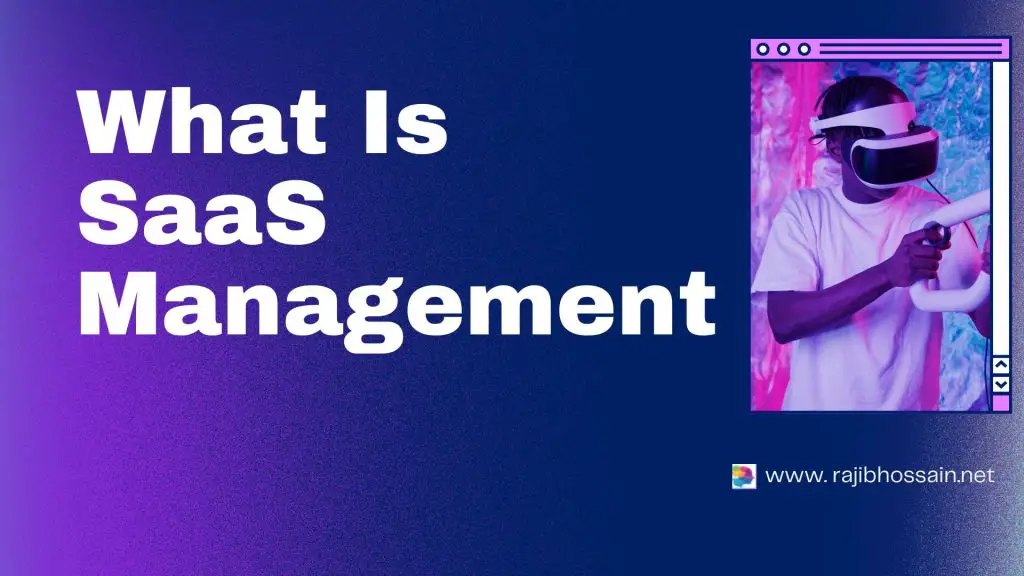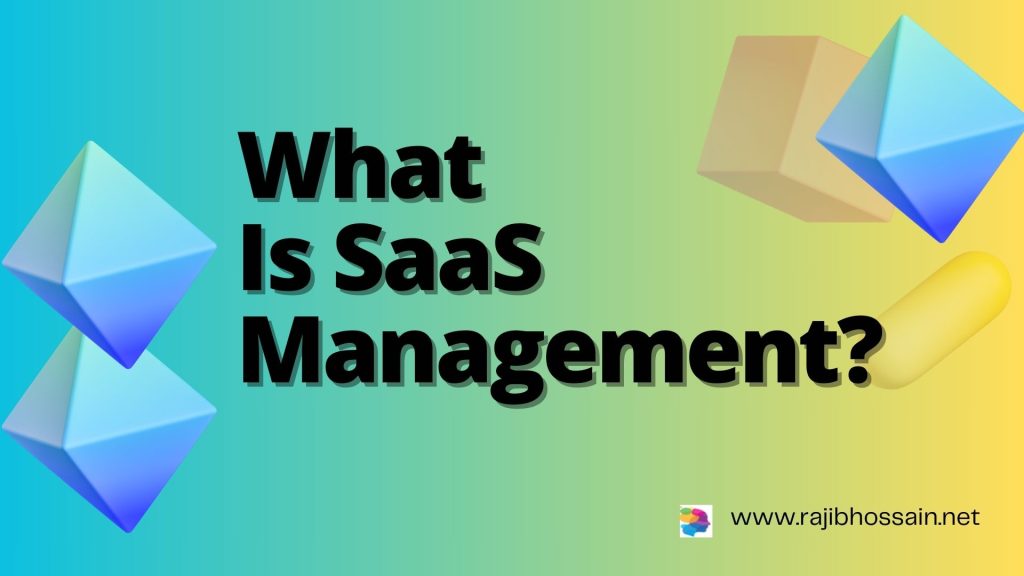
Introduction
As businesses increasingly adopt Software as a Service (SaaS) applications for their versatility and efficiency, managing these tools effectively becomes crucial. SaaS management refers to the processes and strategies used to oversee and optimize the use of these software applications within an organization. Proper SaaS management can lead to significant cost savings, enhanced security, and improved productivity. This comprehensive guide will explore what SaaS management entails, its benefits, key features, and best practices for successful implementation.
What is SaaS Management?
SaaS management involves the centralized administration of SaaS applications within an organization. This includes the procurement, deployment, licensing, usage monitoring, security, and renewal of these software tools. The goal of SaaS management is to ensure that the applications are used efficiently, securely, and cost-effectively, aligning with the organization’s overall business objectives.
Key Components of SaaS Management
- Application Inventory: Maintaining a comprehensive inventory of all SaaS applications used within the organization, including their functions, users, and licensing details.
- Usage Monitoring: Tracking how and by whom each SaaS application is used to ensure they are being utilized effectively and to identify any redundant or underused tools.
- License Management: Managing software licenses to avoid over-purchasing or under-utilizing licenses, ensuring compliance with vendor agreements.
- Security Management: Implementing security protocols to protect sensitive data and ensure that all SaaS applications comply with regulatory standards.
- Cost Management: Monitoring and controlling the costs associated with SaaS applications, including subscription fees and any additional charges.
Benefits of SaaS Management
- Cost Savings: By monitoring usage and managing licenses effectively, organizations can reduce unnecessary spending on unused or redundant applications.
- Improved Security: Centralized management ensures that all applications adhere to security standards, protecting sensitive data from breaches and ensuring compliance with regulations.
- Enhanced Productivity: Streamlined access to necessary tools and elimination of redundant applications can improve overall productivity.
- Better Decision Making: Detailed insights into application usage and costs enable informed decisions regarding the procurement and deployment of SaaS tools.
- Scalability: Efficient SaaS management supports the scaling of operations, ensuring that new applications can be integrated seamlessly as the business grows.
Best Practices for SaaS Management
- Conduct Regular Audits: Regularly review and update the inventory of SaaS applications to ensure accurate tracking and compliance.
- Implement Access Controls: Establish clear policies regarding who can access and manage SaaS applications to enhance security.
- Optimize License Usage: Regularly assess license usage to ensure that the organization is not overpaying for unused licenses.
- Train Employees: Provide training on the proper use of SaaS applications to maximize their benefits and ensure security compliance.
- Leverage SaaS Management Tools: Utilize dedicated SaaS management platforms that offer features like automated tracking, reporting, and security monitoring.

SaaS Management Optimizes Software Usage
Effective SaaS management plays a pivotal role in maximizing the potential of software applications within an organization. By proactively overseeing and organizing software usage, companies can optimize their resources, enhance productivity, and streamline operations.
Furthermore, SaaS management allows for better control and visibility over software licenses, ensuring compliance and cost efficiency. Through continuous monitoring, analysis, and optimization of software usage, organizations can make informed decisions to improve their overall software ecosystem and drive business success.
- Centralized software tracking
- License optimization
- Cost control measures
- User access management
- Compliance enforcement
- Enhanced security protocols
Centralize, Secure, and Simplify Processes
To achieve a more robust software ecosystem, it is crucial to centralize, secure, and simplify processes effectively. By consolidating various software applications into a centralized platform, companies can streamline access, collaboration, and data management across departments. This centralization reduces redundancies, minimizes errors, and enhances overall operational efficiency.
Additionally, implementing stringent security measures within this centralized system helps safeguard sensitive information, mitigate cybersecurity risks, and ensure compliance with data protection regulations. Simultaneously, simplifying processes through automation and user-friendly interfaces enhances user experience, accelerates task completion, and fosters greater adoption of software tools within the organization.
- Single dashboard for software monitoring and management
- Enhanced security protocols for centralized access and data protection
- Simplified software deployment and user access for increased efficiency
- Automated updates to streamline maintenance and reduce manual interventions
- Integrated tools for centralized reporting and performance analysis
- Standardized processes to simplify workflows and optimize software utilization
Enhance Visibility, Compliance, and Efficiency
To enhance visibility, compliance, and efficiency within your software ecosystem, it is imperative to leverage comprehensive analytics and monitoring tools. These tools provide real-time insights into software usage, license allocation, and user activity, enabling proactive identification of potential issues or discrepancies.
By closely monitoring these metrics, organizations can ensure optimal resource allocation, identify underutilized applications, and track compliance with licensing agreements and regulatory requirements. Furthermore, by fostering a culture of transparency and accountability through enhanced visibility, companies can drive better decision-making, improve accountability, and optimize operational efficiency across the software ecosystem.
- Central dashboard for monitoring software usage and compliance levels.
- Customized reporting tools for enhancing visibility into SaaS utilization.
- Automated alerts to ensure timely renewals and license compliance.
- Streamlined workflows for optimizing software asset management processes.
- Data analytics to identify areas for enhancing efficiency and cost-saving.
- Integration capabilities to connect multiple SaaS applications for unified management.
FAQs
1. What tools can help with SaaS management? Several tools, such as Blissfully, Zylo, and Torii, are designed to help with SaaS management by providing features like automated tracking, reporting, and security monitoring.
2. How often should we conduct SaaS audits? It’s advisable to conduct SaaS audits at least quarterly to ensure that all applications are accounted for, compliant, and used effectively.
3. Can SaaS management reduce IT workload? Yes, effective SaaS management can reduce the IT workload by automating processes, improving license management, and enhancing security protocols.
4. What are the risks of poor SaaS management? Poor SaaS management can lead to increased costs, security vulnerabilities, compliance issues, and reduced productivity due to the use of redundant or inefficient applications.
5. How does SaaS management support scalability? SaaS management supports scalability by ensuring that new applications can be integrated seamlessly and that existing applications are used efficiently as the organization grows.
Conclusion
SaaS management is an essential practice for organizations leveraging multiple SaaS applications. By implementing effective SaaS management strategies, businesses can achieve significant cost savings, improve security, and enhance overall productivity. Understanding and adopting best practices for SaaS management can help organizations optimize their software ecosystem, ensuring that each application delivers maximum value.
